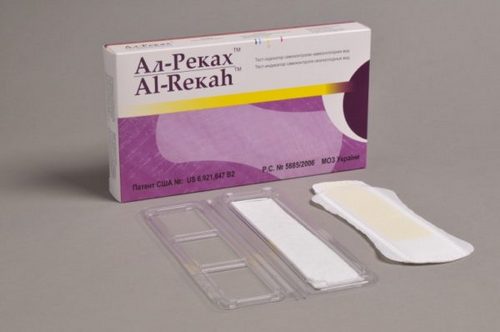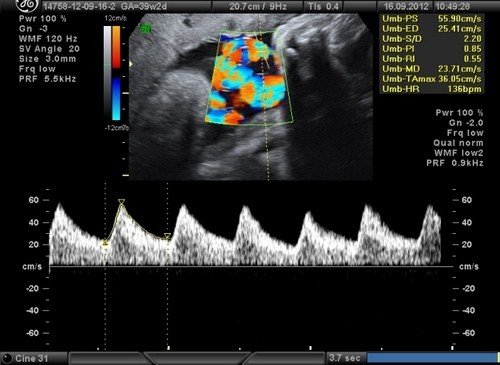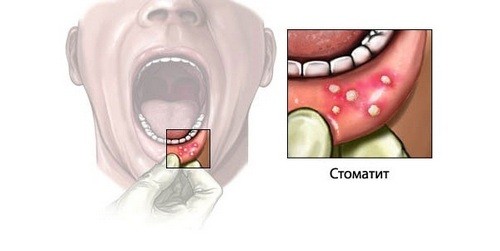During pregnancy, every woman is advised to carefully consider her health. It is important that the baby is born healthy, strong, and the birth is successful. An amniotic fluid leak test may be needed if you suspect premature discharge of amniotic fluid.
In the womb, the future baby is reliably protected by the fetal membranes and amniotic fluid. It is these factors that ensure the normal development and viability of the fetus. Normally, the amniotic fluid leaves the uterus with the onset of labor.
If this happened earlier, we are talking about pathology. It is necessary to contact a medical institution, as this condition is dangerous for the mother and her unborn child.
How to determine that water is leaking?
Symptoms to determine that amniotic fluid are leaking should be known to every woman who is preparing to become a mother.
So, the following circumstances are reliable signs that water is leaking:
- If a premature discharge of amniotic fluid has occurred, its amount varies within 400 ml – this is the volume of water before delivery at week 40 that flows from the genital tract of the woman in labor. It is impossible to not find out that this particular process has occurred, since the liquid will flow in the legs in a jet, and it is rather difficult to miss this phenomenon.
- If we are talking about high damage or a small crack in the fetal bladder, then in this case it is problematic to determine the leakage of amniotic fluid before childbirth or shortly before it. In this case, there may not be much amniotic fluid. In order not to torment yourself with conjectures and not to panic ahead of time, you can purchase a special test to determine the leakage of amniotic fluid.
- If there is no test at hand, you can try to determine the leakage of amniotic fluid, regardless of gestational age (diagnosis can be performed at 28 and 40 weeks, when the need arises). A woman should urinate, conduct genital hygiene and thoroughly blot the intimate area with a towel. After that, she should lie on a white sheet or cotton cloth and be in this position for 20 minutes. If damp spots appear on the tissue over this period of time, the amniotic bladder is most likely damaged and the fluid does come out.
In this case, the expectant mother should understand the difference between vaginal discharge, urine and fetal water. How to understand that amniotic fluid is leaking, and not urine or discharge from the genital tract?
Normally, the water has a transparent color, and their consistency is similar to ordinary water. Less often, they are colored and have a brown or green hue, which indicates a threat to the unborn child. The urine is endowed with a specific smell and a yellow tint, and the vaginal discharge has a denser structure compared with the fetal waters and urine.

The principle of the tests
If it is possible to use a special test that determines the presence of fetal water, then you should not neglect this method, because it is most accurate in the current situation.
On sale you can find two types of tests, both have the same mechanism of action and allow you to find out which environment is in the vagina. Normally, it should be acidic, and the amniotic fluid should be neutral.
And although this is one of the most convenient and reliable ways to determine that water is leaking, 100% trusting these tests is not recommended, since not all expectant mothers have an increased vaginal acidity. In some, it is changed to the neutral or alkaline side against the background of infectious and inflammatory processes in the genital tract. This means that in practice a mistake is possible. Only a specialist knows how to determine that water is leaking.
Views
Consider what tests are.

Test strips
Available in the form of pads, the use of which does not imply any difficulties – it is enough to fix the pads on underwear and wear it for a certain time, periodically observing possible changes. This diagnostic method is based on the differentiation of amniotic fluid from vaginal discharge, male sperm and urine through a chemical reaction to the acid level of the medium.
Test systems
This diagnostic method is considered more complicated, since it is based on the immunochromatographic method. The mechanism of action is similar to test strips: it determines in the vaginal environment that component that can only be found in amniotic fluid.
But test systems do not determine the acidity of the vaginal environment, but specific proteins that are found in the amniotic fluid. You can find two types of such test systems that are susceptible to different proteins. These are more complex diagnostic methods that should not be mistaken, which means that false positive results are practically excluded in the case of them.
How to do a test?
A test strip is the easiest way to determine the flow of amniotic fluid. It allows you to notice how the water is leaking before childbirth, at home. Such a test has the appearance of an ordinary sanitary pad. Inside it there are specific components that, when in contact with amniotic fluid, change color to blue, and when interacting with urine, they turn yellow.
So, how to understand whether suspicions of water leakage are justified:
- Before testing, it is recommended to make sure that the packaging with the test gasket is tight.
- Attach the test pad to the underwear gusset.
- Leave the laundry test for the required period of time, usually it is 12 hours.
- Extract the test and interpret the diagnostic result according to the instructions for use.
Determination of leakage of amniotic fluid using test systems can also be done at home. This method makes it possible to determine the minimum signs of water leakage as a result of the detection of a specific protein in secretions – alpha1-microglobulin. It is it that is found in the amniotic fluid, and in ordinary vaginal discharge and urine it cannot be.
How to determine the fact of leakage of amniotic fluid using a test system:
- Carry out thorough hygiene of the external genital organs.
- Shake the solvent bottle, open it and put on the table in the open.
- Open the packaging of the swab with carefully cleaned hands and carefully insert it into the vagina. The tip of the swab should not be in contact with anything else. The swab is inserted approximately 5 cm for 2 minutes, then it must be removed.
- The tip of the test strip with arrows, according to the instructions, immerse in a pre-opened bottle of solvent. If the fluid does leak, then the test result will be positive instantly.
Evaluation of the result at home
What to do if the study is conducted, how to read the result correctly?
If a woman used a test strip in the form of a gasket, then it is recommended to evaluate the diagnostic result in a room with good lighting. You can conclude that water is leaking by the presence of blue, blue or green spots in any part of the gasket. Yellow spots may be present at the same time, but they should be fixed at the edges.

At the same time, it is important to consider that bacterial infections such as trichomoniasis or vaginosis can lead to a false-positive result by staining the gasket in blue or green. In any case, such a diagnostic result requires immediate medical advice. Only a specialist can clarify the result and knows what to do if amniotic fluid leaks during pregnancy, for example, at 40 weeks.
If a test system was used for the study, the result can be obtained immediately, provided that amniotic fluid leaks in large quantities. With slight leakage, it is recommended to wait up to 10 minutes, the test strip should show one or two lines – in the first case we are talking about the absence of pathology, in the second – about its presence. If the diagnosis did not give any result, most likely the test is defective.
Advantages and disadvantages of the test
Positive aspects of the test:
- the ability to get reliable information quickly and easily;
- Diagnosis can be carried out at home, just buy a test at the pharmacy and do everything according to the instructions;
- Do not need a gynecological examination;
- the possibility of error is minimal.
Cons of the test:
- if after a rupture of the membranes of the fetal bladder a time period of 12 hours has passed, the test may be mistaken and give a false negative result;
- tests are not cheap, and you can apply them once;
- in order for the result to be as accurate as possible, certain precautions must be observed, for example, you can not wrinkle or bend the test strip, it is forbidden to inject medications into the vagina several hours before the diagnosis, use disinfectants, etc.
Error probability
Sometimes any, even high-precision system, can fail. This happens rarely, but in this case, the erroneous result of the study of the crane is undesirable, because we are talking about the health of the child.
The test may show an error in the following cases:
- a false-positive result may occur not because the woman will have to give birth soon, but because of a bacterial infection in the vagina;
- a false negative result can be obtained with improper use of the test, for example, non-compliance with all recommendations for its implementation;
- the test may not determine anything if more than 12 hours have elapsed after the true damage to the membranes of the membranes.
A test that determines that water is leaking (for example, at 40 weeks, which indicates the onset of labor), is the only diagnostic method for establishing this fact. It can be carried out both at home, which is very convenient for expectant mothers, and in stationary conditions.
But if a woman, in addition to water leakage, notices symptoms such as abdominal pain, nausea, weakness, frequent urination and other signs of distress, you should not waste time on the test. In this case, it is better to immediately seek emergency medical help.



